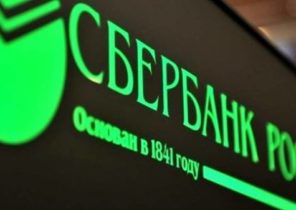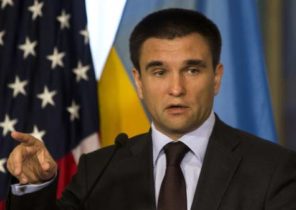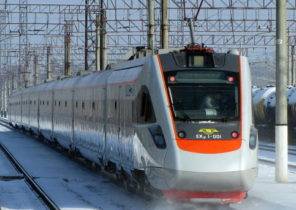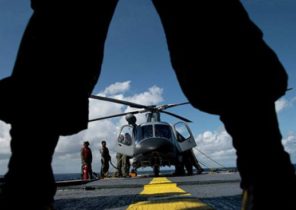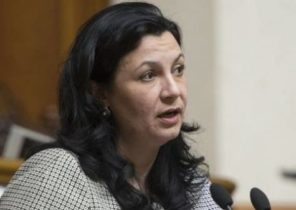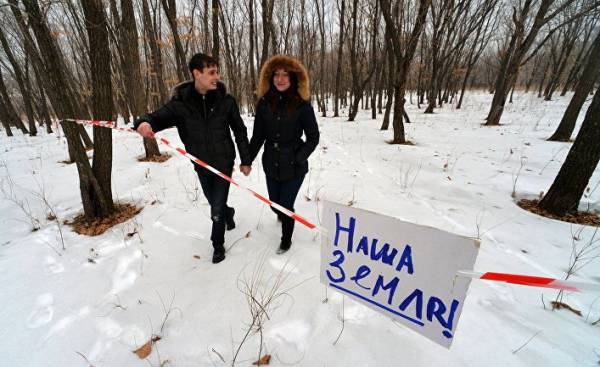
The bears, coming on a potato field, and steaming volcanoes are not afraid of the immigrant to Kamchatka on the Pacific ocean.
“All this is mine now. Here I will be in the summer to grow potatoes and cabbage,” says Ilya Semykhatka. Satisfied, he goes through a desert and blown through the land, which he received from Putin before Christmas.
Those who have attempted before him, surrendered. They have had enough and high prices, appalling state of infrastructure and low wages, and long winter, when snow may lie until may.
Decay framed by beautiful nature
Since 1991 the population in a beautiful, resource-rich and vital Eastern regions of Russia was reduced at least by 30%. Now the settlers trying to find new ways of survival.
At stake — no more, no less — the future of Russia. Putin warned that if the Russians do not succeed in the East, their children and grandchildren speak Chinese.
Colonization continues 300 years. Couldn’t kings, nor the Communists, nor Putin.
On the Peninsula, whose territory is 472 thousand square kilometers, which is almost 50% more than mainland Norway, now there are only 315 thousand people
Shuttered factories, abandoned houses, rusted-out remains of ships and concrete walls testify to the dreams that never came true.
Migrant, living between volcanoes
Ilya Semykhatka moved to Kamchatka from Donetsk in Ukraine before the war.
He prefers to see opportunities rather than problems.
“Yes, the climate is harsh, sometimes crop failure. Prices are too high, and too many bureaucrats. But I love it here. We have huge resources, and we live freely,” says Semykhatka.
The farm he plans to be developed carefully, so as not to get into a monstrously expensive loans.
“You only see what is there nature. Here in the woods, I’ll build houses for the tourists. As soon as the snow melts in may, immediately and start,” laughs the farmer engaged in potato cultivation.
“In autumn we sit and watch as the potatoes grow, and the bears will walk through the fields with volcanoes”.
A large-scale campaign to attract Russians in the far East
From February 1 this year, all Russians over the age of 18 can receive free land in regions in the East of Russia.
According to official opinion polls, more than two million Russians are ready to go to the East, as Pro-Kremlin TV channels spend a large campaign, showing footage of happy settlers are building “your dream home”.
News program on the channel “Russia” remind them that it’s important.
“In the far East on one square kilometer there is one Russian. On the other side of the border in one square kilometer there are 139 Chinese,” — says the announcer.
“Realize your dreams in the far East,” urges TASS.
Facts: free land in the far East of Russia
From 1 February 2017, each of the 144 million Russians may send a request to receive a 5 hectares (50 million square kilometers) of land in the region.
Free land can be obtained in the most sparsely populated regions of Russia: the Amur region, Jewish Autonomous region, Kamchatka, in the Magadan region, in Primorsky Krai, in the Republic of Sakha, Sakhalin region, Khabarovsk territory and Chukotka.
The purpose of the action: to stop the outflow of population from the region, the number of people who for 25 years has decreased by about 40-50%.
Five years later the land was transferred in full ownership, if it really was used.
Asian medicinal mushrooms, rabbits, salmon fishing and fast food
Russian immigrants who are trying to try their luck now have to be very inventive to overcome nature, corruption and the economic crisis:
1. Farmers in the Primorsky region began to grow, the Asian shiitake mushroom, which, when moist air from the Pacific ocean grows well in the local woods on the trunks of the Mongolian oak, Amur Linden.
2. Others are trying to recycle plants or to plant hardy varieties of potatoes, lettuce and cabbage.
3. The authorities also offer loans to those who want to bet on the rabbit breeding, breeding turkeys, pigs and cows which you can export to hungry Chinese.
4. 24% of immigrants say they are going to use “Putin’s acres” for the construction of houses.
5. Another large group of immigrants relies on the growing tourism, hunting and fishing.
Tanya put everything on their Asses
Tanya’s family is Babochka trying to build a new life on the outskirts of Toronto in a small old house, surrounded by empty barrels, waste and barking guard dogs.
Their hopes for the future Tanya connects with a small herd of long-haired and frisky donkeys of the steppe of Kazakhstan.
“We got the land for free on Christmas eve. I think to organize a trip on the donkeys for the kids. We are the first who decided to take “donkey tourism,” says Babochka.
“Donkeys are kind, patient, they are great for short trips with children. In addition, it is environmentally friendly”.
Tanya saddling a donkey and Aftenposten gives the photographer the opportunity to take a small trip.
“It took us two years to defeat the bureaucrats and to obtain a permit for import and transport of donkeys from Kazakhstan to Kamchatka. Now I hope that spring will be able to start,” says Tanya.
“The winter they moved perfectly. We have even a few foals.”
For 300 rubles — about 45 Norwegian kroner — tourists can take a tour and get private photos on the background of volcanoes.
“But some say it’s too expensive,” worries Thani, son Alyosha.
As a Russian to obtain free land in the wild
On the website of the Department of human capital development of the Far East, the Russians can fill out the online application to receive “Putin’s acres”.
The Russians have already sent 58 thousand applications for free land in the East, the majority of applications sent by residents of Moscow, St. Petersburg and Novosibirsk.
While only 5 080 signed contracts, according to the Department.
Most popular Primorsky Krai in the South, on the border with China.
Some have drawn Parallels with the law of Abraham Lincoln on the free distribution of land (the”Homestead Act”) from 1862, which provided millions of Americans free land.
But the settlers on the “Wild West” received 64 acres of land. The Russians in the “Wild East” we have to settle for 5 acres.
Fear of corruption
Opposition politician Alexei Navalny supports the provision of free land, but warns against corrupt bureaucrats.
The website through which the Russians can send a request to receive the free land, is experiencing technical problems. Many complain that they cannot fill out an application.
“The system simply does not work”, — Navalny wrote. He suggests establishing independent control over those who got possession of the best lands.
Few of the local wants to free the earth
It is unclear whether Ilya and Tanya to draw on Kamchatka many immigrants.
In order to attract to the East more people, Putin ordered to reduce prices and fees. In addition, was dismissed a few corrupt governors and mayors.
Created four new “free port” on the implementation of the 475 new projects is directed 1,3 billion roubles.
“This will help to create 80 thousand new jobs”, — optimistically says the Minister, “Far East” Alexander Galushka, according to Interfax.
But the locals who receive free land there are advantages — they can get land from 1 October — are still skeptical.
Yet of the 6 million residents of Eastern Russia applications sent only 30 thousand people.
“We don’t need free land”
Loyal to the Kremlin, the newspaper “Komsomolskaya Pravda” a little doubt in the outcome. The chances of immigrants is not too high, this will win the Chinese.
Many small farmers in the far East gave up a long time ago. They lack capital, technology, trade networks and infrastructure.
While the settlers get loans at 15-20%, the Chinese — 6-7%.
The Chinese pay for electricity is almost three times smaller than Russian — although I buy it in Russia.
“Why do we need free land. There is only some retirees remained. The young people left,” — say the remaining residents of the village of Vasilkovka in Primorsky Krai on the border with China.
He is the most dangerous in Russia, the work of
The Governor of Kamchatka Vladimir Ilyukhin — who needs to take care that the immigrants all happened. He was appointed personally by Putin.
“The economy is growing, with positive results. We have large reserves of minerals, we extracted a half of salmon in Russia”, says Ilyukhin Aftenposten correspondent in his office in the center of Petropavlovsk.
Last week, he came all the way to the Kremlin with a length of 6.8 thousand kilometers, to personally tell President Vladimir Putin about the results achieved.
“The number of tourists also increased dramatically. But we need to improve infrastructure.”
Aftenposten: In the past year, many governors were dismissed. Russian Newspapers write that you like the Governor the most dangerous in Russia, the work.
Ilyukhin (smiling): It’s a thankless job.
Why?
— People want quick results. It is quite possible to understand. But still: compared to the Soviet times we have made significant progress.
Per Anders Johansen (Per Anders Johansen) is a correspondent for Aftenposten in Moscow
